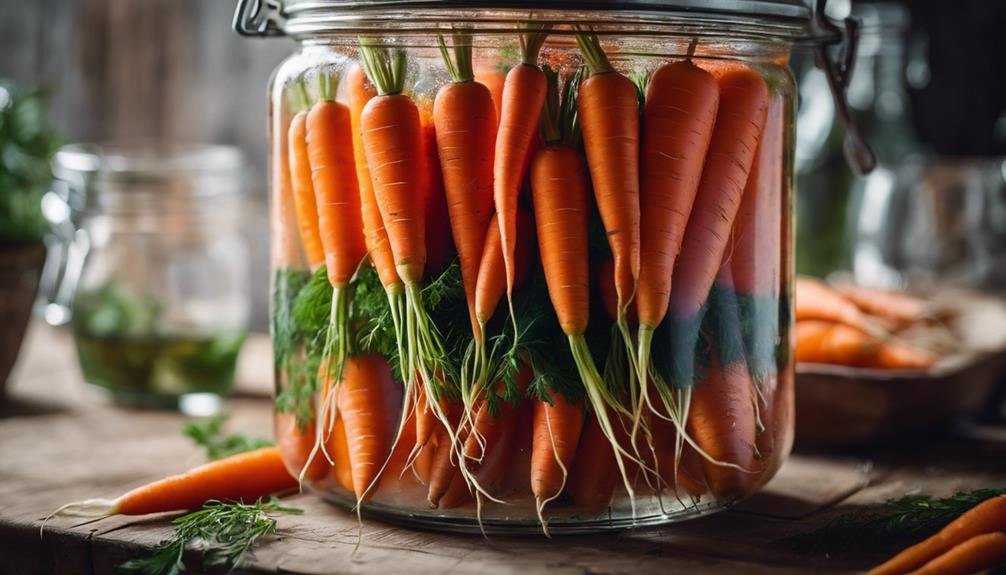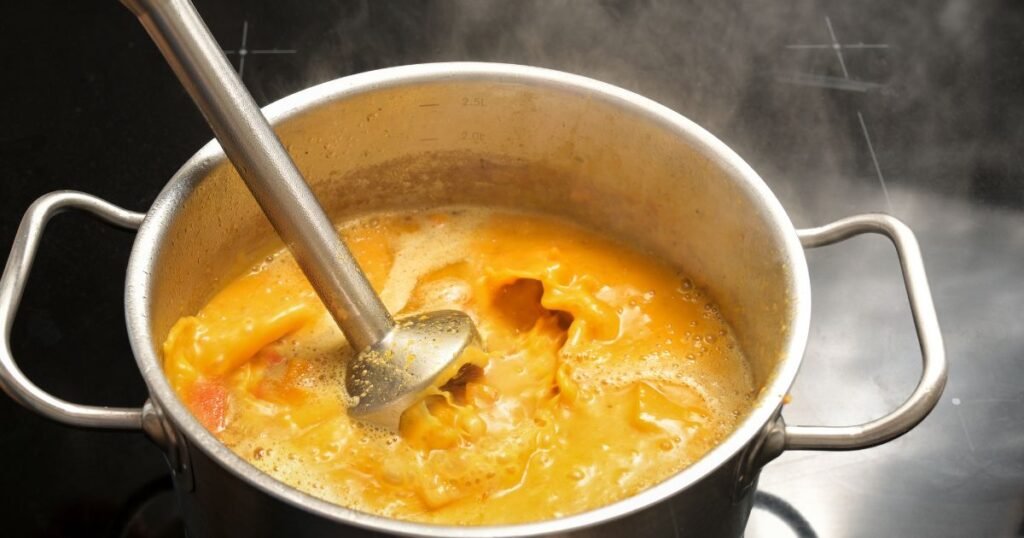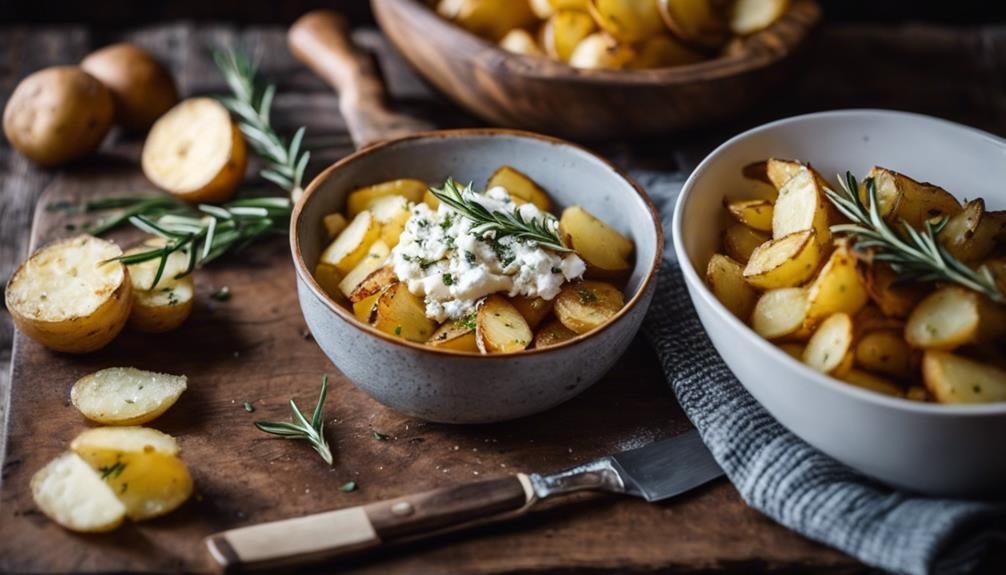While a weak handshake and a crunchy carrot share little in common, both can leave a lasting impression. You’re about to embark on a culinary adventure where soggy veg is no longer the norm.
‘Crunch Factor: The Revolutionary Way to Keep Your Carrots Crispy!’ isn’t just a guide; it’s your secret weapon in the kitchen. You’ll learn how to pick the top candidates for crunch and the best cooking techniques that guarantee every bite is a crispy delight.
And let’s not forget the handling and storage tips that make all the difference. Stick around to uncover how these insights can turn your humble carrot into the show’s star.
Crispy Carrots Key Takeaways
- Use dry-heat methods like roasting for crispness and avoid crowding the pan.
- Toss carrots in fat or glaze before cooking for caramelization.
- Allow cooked carrots to cool on a rack to maintain crispness.
- Store cooled carrots without moisture to preserve texture.
Selecting Perfect Carrots
Before diving into the culinary battlefield, you must pick your warriors wisely; firm, smooth, and vibrant orange carrots are your best bet for a crispy triumph. When chosen correctly, these root vegetables transform into crispy carrots, roasted to perfection or seared for a crunchy delight.
Remember that medium-sized carrots are your culinary sweet spot when you’re eyeing the produce aisle. They offer an unbeatable balance of sweetness and flavor in carrot recipes. Larger ones might pack a punch in taste, but tender, smaller ones often deliver on texture.
Don’t let the allure of oddly shaped carrots distract you; you’re looking for warriors without cracks, soft spots, or blemishes. These flaws can compromise the crunch you aim for in your carrot side dishes or vegetable crisps. And if the stem end looks as fresh as the morning dew, you’ve hit the jackpot. That’s a telltale sign of freshness, ensuring your cooking carrots won’t disappoint you when it’s time to dazzle your diners with an array of crispy delights.
Optimal Cooking Techniques
The secret to perfect crunching in your carrots starts with mastering the heat of your kitchen battlefield. You’re not just cooking; you’re an artist; your oven is the canvas. Glazed carrots, with their glossy, sugary exterior, become your pièce de résistance when you wield the roasting pan with precision. Remember, crispy carrots aren’t a happy accident—they result from careful planning and execution.
To transform your humble root into a crunchy, caramelized delight, consider these tactics:
- Roast in a preheated oven at 400°F to encourage caramelization while preserving that sought-after crunch.
- Space your carrots evenly in the roasting pan to guarantee each piece gets its moment in the spotlight.
- Glaze your carrots lightly with a blend of your favorite seasonings and a touch of honey or maple syrup to *heighten* their natural sweetness.
- Stir-fry for a quick, vibrant addition to any meal, keeping the heat high and the cooking time short.
- Season boldly, letting the carrots’ natural flavors harmonize with your chosen herbs and spices, turning the ordinary into the extraordinary.
Armed with these techniques, you’re not just serving dishes but crafting experiences. Let the oven do the heavy lifting, and watch your glazed carrots emerge victorious and irresistibly crispy.
Handling for Crispness

Proper handling and moisture control are key to keeping your carrots as crispy as the day they were picked. Whether you’ve mastered the dry-heat cooking methods or you’re trying out that new baby carrot recipe, the crispness of your carrots doesn’t stop at the stove. It’s all in the follow-through, folks!
| Step | Tip |
|---|---|
| Post-Cooking Cool Down | Use a cooling rack to avoid steam build-up. Let those beauties breathe! |
| Storage | An airtight container is your carrot’s best friend for storing cooked carrots crispy. |
| Serving | No puddles, please! Transfer carrots without any liquid hitchhikers. |
| Leftovers | Reheat with care to preserve that sought-after snap. |
Moisture’s Role Explained
While you’ve been mastering the art of keeping carrots crispy post-cooking, it’s time to shed some light on how moisture impacts that sought-after crunch. Moisture, you see, is a double-edged sword in the quest for the perfect bite.
Here’s the lowdown:
- Excessive liquid can be a buzzkill for crispiness, softening those beautifully cooked edges. It’s like throwing a wet blanket on your crispy carrot party.
- Yet, carrots need a certain moisture level to maintain their texture and flavor. IFindingthat sweet spot. Is the key
- Evaporation plays the villain by stealing away moisture, leaving behind a rubbery disappointment instead of a crispy delight.
- But storing your carrots in a way that minimally exposes them to air can combat unwanted evaporation. Think of it as putting a shield around your carrots.
- Remember, how you handle your carrots after cooking can enhance or break their crispiness. Avoid stacking or covering them immediately; let them bask in their glory.
Understanding moisture’s role is critical in serving carrots that crackle with each bite. It’s not just about keeping them dry but mastering the moisture to make every carrot a showstopper on the plate.
Serving and Storage Tips

Properly storing carrots isn’t just about keeping them out of harm’s way; it’s a culinary secret weapon for maintaining that perfect crunch. Imagine the magic when you serve a platter of caramelized carrots or dazzle dinner guests with glazed carrot recipes that scream dinner perfection.
Here’s the scoop: to keep those honey-glazed carrots and spiced carrot chips irresistibly crispy, start by letting them cool off completely post-roasting. Rushing them into a container is like sending an open invitation to Soggyville.
Now, consider your fridge the VIP lounge for roasted rainbow carrots and other veggie delights. Tuck them into a sealed container with a damp paper towel, whispering sweet nothings, ensuring they stay hydrated without getting drenched. And remember, those ethylene-producing fruits are party crashers that’ll turn your carrots limp, so store them separately. Swap out the water every couple of days if you’re storing them immersed, keeping those healthy snacks crisp and ready for action.
Frequently Asked Questions
How Do You Keep Carrots Crispy?
Store your carrots in water to maintain their crispiness, but turn off their green tops only when ready to use them and change their water frequently. Additionally, incorporating a paper towel to absorb any excess moisture can significantly help. This approach can be a real game changer in keeping your carrots crunchy!
How Do You Keep Carrots From Drying Out?
To prevent your carrots from drying out, soak them in water, changing them every few days to keep them fresh, crunchy, and hydrated.
How to Make Carrots Crisp?
To make carrots crisp, begin by selecting fresh and firm carrots. Roast, sear, or grill them without overcrowding the cooking surface. After cooking, allow them to cool on a rack before storing them in an airtight container to preserve their crunchiness.
How Do You Keep Carrot and Celery Sticks Crisp?
To maintain the crispness of carrot and celery sticks, immerse them in cold water inside the refrigerator. It’s crucial to replace the water every two days to ensure freshness. For added crispness, incorporate ice cubes into the water, and for a hint of flavor, consider adding a splash of lemon.
Conclusion
You’ve mastered keeping your carrots crispy, transforming them into the crunchiest delights! You’re all set by handpicking prime carrots and wielding dry-heat techniques like culinary wizards,
Remember, the little details—like avoiding the dreaded steam trap and crafting a dry haven after cooking—make all the difference. Serve them upright, store them with care, and bask in the glory of your crisp carrot creations.
Welcome to the crunch revolution—your taste buds will thank you!


